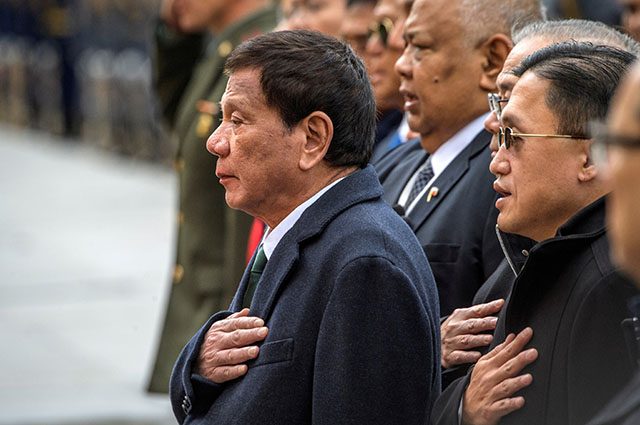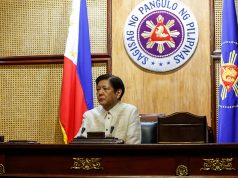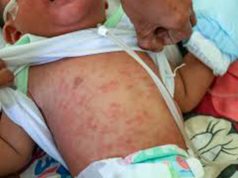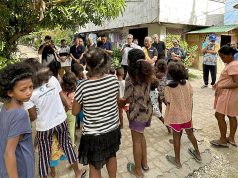
After days without a public appearance despite the public alarm over the first cases of the deadly novel coronavirus in the Philippines, President Rodrigo Duterte finally spoke up to address the concerns.
His remarks, however, were perceived by critics to favor the country’s relations with the Chinese government.
Filipinos have called for Duterte to release a public statement concerning the new coronavirus strain or the 2019-nCoV ARD since the first suspected cases were reported in January.
His earlier reluctance to impose a temporary travel ban on all flights to and from mainland China was also heavily criticized and blamed for increasing number of persons under investigation in the country.
Duterte only held a closed-door-emergency meeting with some Cabinet officials and a representative of the World Health Organization on Monday night, February 3, three days after the first confirmed case and two days after the death of one of two patients who tested positive for nCoV.
It was after that meeting when he told reporters that “everything is well” and that Filipinos should stop fostering any sinophobia or anti-Chinese sentiments.
“Let’s start with the narratives by saying that everything is well in the country. There is nothing really to be extra scared of that coronavirus thing although it has affected a lot of countries…You know one or two in any country is not really that fearsome,” the president said.
These long-awaited remarks did not sit well on social media.
Twitter users said public rage is not an attack on the Chinese people but to the Duterte administration and the Chinese government.
They cited China’s aggressive encroachment on the West Philippine Sea and Duterte’s lack of resolve to reinforce the country’s rights over it.
Dumb logic. Who even blamed the Chinese in the first place? Wuhan , China is ground zero. We want to avoid infection.
Lastly , China is not kind. They got part of our West PHILIPPINE Sea. https://t.co/WjSX5bx64i
— Noemi L. Dado (@momblogger) February 3, 2020
yeah, i agree, stop being xenophobic to chinese people BUT china, who's claiming west philippine sea, building outposts in the said contested area, who owns 40% of national grid, has been kind to US?????? maybe to you but not us https://t.co/WKWbQgv3QG
— situational anxiety szn (@sadboimikee) February 4, 2020
One Twitter user observed that Duterte’s remark suggested his lack of compassion and regard for human rights.
“The deadliest plague or pandemic is the normalization of the lack of compassion, a blatant disregard of human rights, and the diminishing of human life into some number described with ‘lang naman’,” the user said.
Duterte provided two reasons for speaking against sinophobia.
“One, is that we have many Filipinos in China. Second is even if there are none, you know, we are a community of nations. We cooperate. China has been kind to us. We can only also show the same favor to them,” he said.
For Duterte, the outbreak should not be blamed on the Chinese.
“It happened in China on — at least the first, ‘yun lang. But that is not the fault of anybody. Not of the Chinese, not of the Filipinos, not of anyone,” he said.
One Reddit user, meanwhile, criticized the administration’s double standards against Filipinos in favor of Chinese nationals.
The real deal with the government’s handling of the health crisis
Calls for the government to impose a temporary travel ban to and from China started when a five-year-old Chinese boy in Cebu and several tourists who landed in Kalibo exhibited signs of the new pathogen late January.
All of them turned out to be negative from nCoV and were discharged from the hospital.
Health Secretary Francisco Duque III previously said preemptive measures would be unfair to Chinese tourists.
The travel ban that the chief executive initially imposed after, however, only covered Wuhan City, the epicenter of the global outbreak, which was already on lockdown since January 23.
This was before the Department of Health confirmed the first nCoV case on January 31. The patient is a 38-year-old Chinese woman who arrived January 21 and has since carried the virus before being admitted in San Lazaro Hospital in Manila.
Duterte eventually expanded the travel ban to incoming visitors from mainland China, Hong Kong and Macau after the second patient was detected and died on February 1. The patient was identified as the companion of the Chinese woman, who was the first confirmed case in the country.
The suspected cases in the country also kept rising. As of publication, there are a total of 80 patients being watched for the novel coronavirus in the Philippines.









